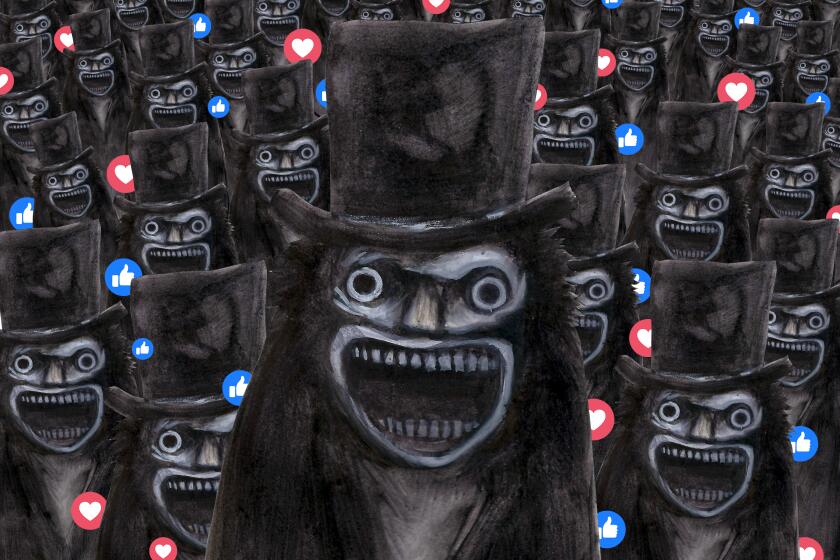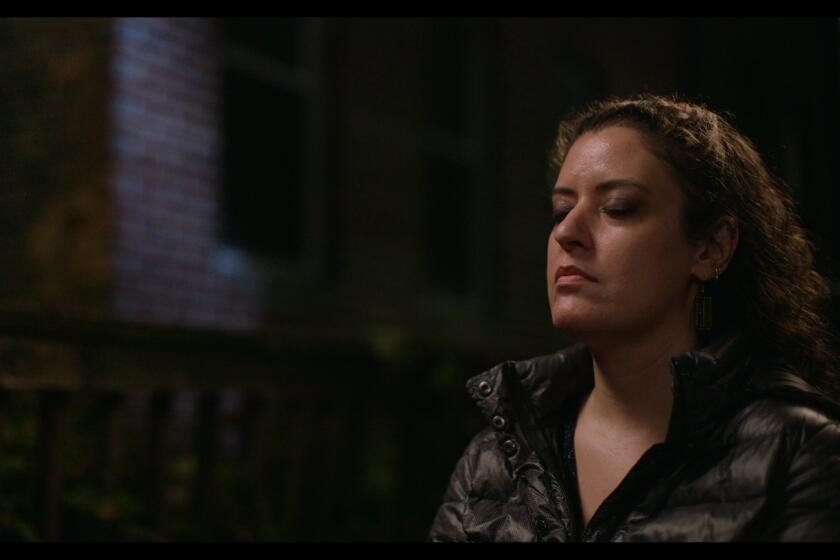Tinker, tailor, technical advisor
IN the summer of 1997, Robert De Niro traveled to the Soviet Union to accept an honorary award for his contributions to cinema at the Moscow Film Festival. While he was there, the actor slipped away for a few days on an undercover mission that found him meeting with a colorful contingent of former KGB undercover operatives.
De Niro ended up in a sauna at an old KGB social club, draped only in a towel, the vodka flowing as the men who were once in charge of covert operations for America’s longtime adversary regaled him with war stories about the black arts of KGB intelligence gathering. Never much of a talker, De Niro largely stayed silent, listening and observing.
For the record:
12:00 a.m. Dec. 21, 2006 For The Record
Los Angeles Times Thursday December 21, 2006 Home Edition Main News Part A Page 2 National Desk 0 inches; 30 words Type of Material: Correction
Robert De Niro: An article in Tuesday’s Calendar section about the film “The Good Shepherd” said Robert De Niro traveled to the Soviet Union in 1997. He went to Russia.
Finally, he asked one of the graying KGB generals to speak to a puzzlement he had. “How do you deal with betrayal?” The old KGB man gazed thoughtfully at De Niro before reaching out and touching his shoulder. “To deal with betrayal you must begin with one thing,” he told De Niro: “The understanding that another man’s soul is darkness.”
Those words clearly struck a nerve. One of the striking aspects of “The Good Shepherd,” a dark history of the CIA that is De Niro’s first film in a decade as a director, is the strange kinship between CIA and KGB operatives. Though deadly adversaries, capable of betrayal and brutal violence, they are also inextricably bound, often knowing each other better than their own wives and families.
Though the film is the brainchild of Eric Roth, who labored on the script for years, much of the credit for its pungent air of authenticity goes to Milton Bearden, the film’s technical advisor and a 30-year veteran of clandestine services in the CIA. It was Bearden who introduced De Niro to the retired KGB officers in Moscow. Now 66 and retired for more than a decade, Bearden has a new career writing books and helping Hollywood spy tales be a bit more believable -- he’s currently at work advising Mike Nichols on “Charlie Wilson’s War,” which stars Tom Hanks and Julia Roberts.
A big bear of a man with the gruff charm of a retired high school football coach, Bearden is a zestful storyteller and a sharp-eyed analyst of CIA mores. When I asked if one of the film’s most intriguing themes -- that the secrets and skulduggery of agency life took a huge toll on marriages -- was true to life, Bearden quipped, “Let’s just say I never let Eric talk to my ex-wife.”
Bearden met De Niro through Richard Holbrooke, the former U.N. ambassador. “It started out almost like a spy operation,” Bearden recalls. “Bob said he wanted to do a spy thriller and Holbrooke turned over a cocktail napkin and wrote my number on it. Bob was going to Moscow and asked if I knew any KGB guys. That part was easy.”
Best known for his role in running the agency’s covert support of the Afghan resistance against the Soviets in the 1980s, Bearden ran the agency’s Soviet-East European division in the years leading up to the fall of Russia’s Cold War empire.
“Milt is the real thing,” De Niro told me. “Whenever we were working on the film, I’d ask him, ‘If anything is blatantly wrong -- or wrong at all -- you have to let me know.’ He’d give us great details and ideas to make things either more plausible or in the correct spirit of the events. The best thing is that when you’re with Milt, you’d always have some interesting adventures.”
Their meetings with the KGB had the air of a Russian version of “The Sopranos.” “The KGB guys all wore felt hats in the sauna while this huge guy with tattoos of Russian tanks on his arms would brush us with birch branches,” Bearden says. “We once met the KGB guys at a stadium that had a boxing ring and one of the guys, being a fan of ‘Raging Bull,’ insisted on putting on gloves and going a couple of rounds with Bob. De Niro was game for anything, but he kept looking at me, as if to say, ‘I sure hope Bearden isn’t going to get me killed.’ ”
According to Bearden, the CIA has had a long-standing relationship with Hollywood. “There was a time when we were doing a lot of operations in Moscow that demanded quick-change disguises, which were developed right in this town,” he told me over lunch at a Westside eatery last week.
If an agent was being followed by a Soviet operative, he’d slip into a restaurant and appear minutes later dressed as an old Russian babushka, neatly ditching his KGB tail. “We sent a lot of people out here to get together with makeup artists and technicians to learn more about disguises. It was really important to be able to change rapidly and get it right the first time. We didn’t get a second take.”
Born in Oklahoma, Bearden quit school to join the Air Force, then studied Chinese at Yale’s Far Eastern Institute. He spent time in Korea before starting work on his doctorate at the University of Texas. It was then, at the height of JFK-inspired ‘60s idealism, that a CIA recruiter knocked on Bearden’s door. “It didn’t take much,” he recalls. “It felt exciting and I sure as hell didn’t want to go to law school.”
What “The Good Shepherd” does especially well is capture the yin and yang of intelligence work. While it reflects Bearden’s belief that “to be a good CIA officer you have to be a hopeless romantic,” it also reminds us of the limits of American idealism, an especially timely message in an era when our efforts to impose democracy in Iraq have run amok. When Bearden joined the CIA, it was run by men who, like the neoconservatives of our day, believed American good would always triumph over evil.
“Our film shows you how America Inc. started with a generation of guys who all met slapping each other with towels at Andover and Yale,” Bearden says. “They all came from the same place and they all kept each other’s secrets.”
Back when Bearden joined the agency in 1964, the CIA was in a state of turmoil after the Bay of Pigs fiasco, a dramatic focus in “The Good Shepherd.” The agency was also at the end of an era dominated by an upper-crust elite of Cold War warriors whose postwar idealism had hardened into an often ruthless pragmatism.
Edward Wilson, the lead character in “The Good Shepherd,” played by Matt Damon, is a composite of several top CIA hands, notably counterintelligence chief James J. Angleton; Frank Wisner, a key man in the overthrow of Iran’s Prime Minister Mohammed Mossadegh; and Tracy Barnes, who helped organize the Bay of Pigs invasion.
It was Angleton, certainly as Bearden sees it, who crippled the agency for years with his growing paranoia that the CIA had been completely infiltrated with Soviet double agents. “He even believed [former CIA Director] William Colby worked for the KGB,” Bearden says. “So we were paralyzed for years with mole hunts and all sorts of foolishness.”
One of the key story lines in the film neatly evokes this mania, being loosely based on a baffling chapter in agency history involving the 1961 defection of a key Soviet agent named Anatoliy Golitsyn, which was followed by the defection of another Soviet agent, Yuri Nosenko, who claimed Golitsyn was a double agent. After failing a lie detector test, Nosenko was put in solitary confinement for 3 1/2 years.
“Golitsyn basically convinced Angleton that there was a monster plot -- that not a leaf fell without the KGB knowing it,” Bearden says. “When Nosenko came along, he got locked in a dungeon in Virginia because Angleton eventually believed the KGB had sent him for disinformation purposes.”
The film’s most disturbing sequence depicts a similar defector being tortured by the CIA in a way that clearly evokes our present-day debate over CIA sponsored water-boarding and torture of terrorism suspects. When I asked Bearden if the scene were historically accurate, he didn’t mince words.
“If you mean ‘Did we ever beat the [crap] out of someone till they jumped out the window?’ I’d have to say ‘No,’ ” he says. “Torture is just [bull]. It’s used by people who want an admission for their checklist. It doesn’t elicit real information. When agency people who’ve seen the film say, ‘Hey, that’s not accurate, we never water-boarded anybody,’ I tell them, ‘No, you just stuck a [expletive] defector in a solitary cinderblock for 3 1/2 years.’ We may not have water-boarded guys in 1957, but we’re doing it all the time now, so I don’t think it’s a dishonest portrayal at all.”
Bearden clearly keeps up on intelligence matters, so I couldn’t resist asking for his take on the imbroglio involving ex-Soviet spy and Kremlin critic Alexander Litvinenko, who died in London after being exposed to a deadly dose of polonium-210. Was Soviet President Vladimir Putin, an ex-KGB boss himself, behind it?
Bearden isn’t so sure. “It would be so stupid and so obvious that it’s hard to believe it was Putin, especially when there are so many Russian billionaires and KGB officers who could have access to the polonium.” He wagged his head. “It makes you wonder. Why not just use an ice pick, like they did when they murdered Trotsky. Wouldn’t it have been a helluva lot simpler?”
*
“The Big Picture” runs each Tuesday in Calendar. If you have questions or criticism, e-mail them to patrick.goldstein@latimes.com.
More to Read
Only good movies
Get the Indie Focus newsletter, Mark Olsen's weekly guide to the world of cinema.
You may occasionally receive promotional content from the Los Angeles Times.








